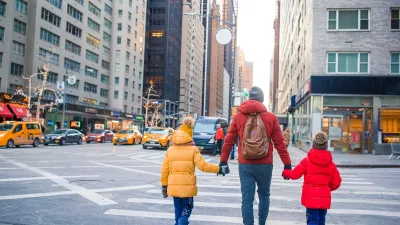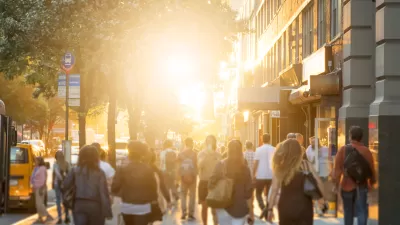If jobs and services are reoriented and public transport rethought, sprawling cities like Melbourne can mitigate the consequences of dwindling energy supplies, argues a recent column.
"Melbourne has a huge footprint, and in a future of energy shortages and other ecological pressures it seems obviously unsustainable to continue development as we have.
These concerns naturally lead to thinking about ways to curb its spread. It also leads to an emphasis on the suburban rail system and the need to extend it out further along the spreading corridors, bringing the newest and most distant into contact with the whole. Somehow we need to get it all back under control.
However, most Melburnians know how to deal with this physical spread. In simple terms they do not think about it, but rather use just those bits of the area that they need...That view of the world can be seen in the way that the majority match a job and a home: a very large share of all workers now travel to work within the sector of Melbourne where they live...Real Estate agents report many house sales are to clients already within the general area."
"The fact that we have coped so far with the vast scale of the metropolitan area is not grounds to forget about its growth and development. Far from it. What it does mean though is we need to re-think the way we go about addressing the serious difficulties of housing supply, job availability, and the need to increase travel by public transport.
What we need to do is devise regionally focused solutions to some of these issues, solutions that match the way the majority use the urban area, rather than be mislead by worry about its overall size."
FULL STORY: Well-managed sprawl can make a city liveable

Alabama: Trump Terminates Settlements for Black Communities Harmed By Raw Sewage
Trump deemed the landmark civil rights agreement “illegal DEI and environmental justice policy.”

Planetizen Federal Action Tracker
A weekly monitor of how Trump’s orders and actions are impacting planners and planning in America.

The 120 Year Old Tiny Home Villages That Sheltered San Francisco’s Earthquake Refugees
More than a century ago, San Francisco mobilized to house thousands of residents displaced by the 1906 earthquake. Could their strategy offer a model for the present?

Ken Jennings Launches Transit Web Series
The Jeopardy champ wants you to ride public transit.

BLM To Rescind Public Lands Rule
The change will downgrade conservation, once again putting federal land at risk for mining and other extractive uses.

Indy Neighborhood Group Builds Temporary Multi-Use Path
Community members, aided in part by funding from the city, repurposed a vehicle lane to create a protected bike and pedestrian path for the summer season.
Urban Design for Planners 1: Software Tools
This six-course series explores essential urban design concepts using open source software and equips planners with the tools they need to participate fully in the urban design process.
Planning for Universal Design
Learn the tools for implementing Universal Design in planning regulations.
Clanton & Associates, Inc.
Jessamine County Fiscal Court
Institute for Housing and Urban Development Studies (IHS)
City of Grandview
Harvard GSD Executive Education
Toledo-Lucas County Plan Commissions
Salt Lake City
NYU Wagner Graduate School of Public Service





























